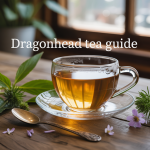Excessive underarm sweating can be embarrassing and uncomfortable, but you don’t need expensive treatments to find relief. These 7 natural ways to stop underarm sweat at home offer effective solutions for people who want to manage perspiration without harsh chemicals or costly procedures.
This guide is perfect for anyone dealing with heavy underarm sweating who prefers gentle, budget-friendly alternatives to commercial antiperspirants. You’ll discover how simple dietary changes can reduce sweat production from the inside out, learn which breathable fabrics keep you cooler throughout the day, and explore proven stress management techniques that help control nervous sweating.
From natural deodorant recipes to cooling therapies you can do in your kitchen, these home remedies give you practical tools to stay dry and confident all day long.
Use Natural Antiperspirants and Deodorants
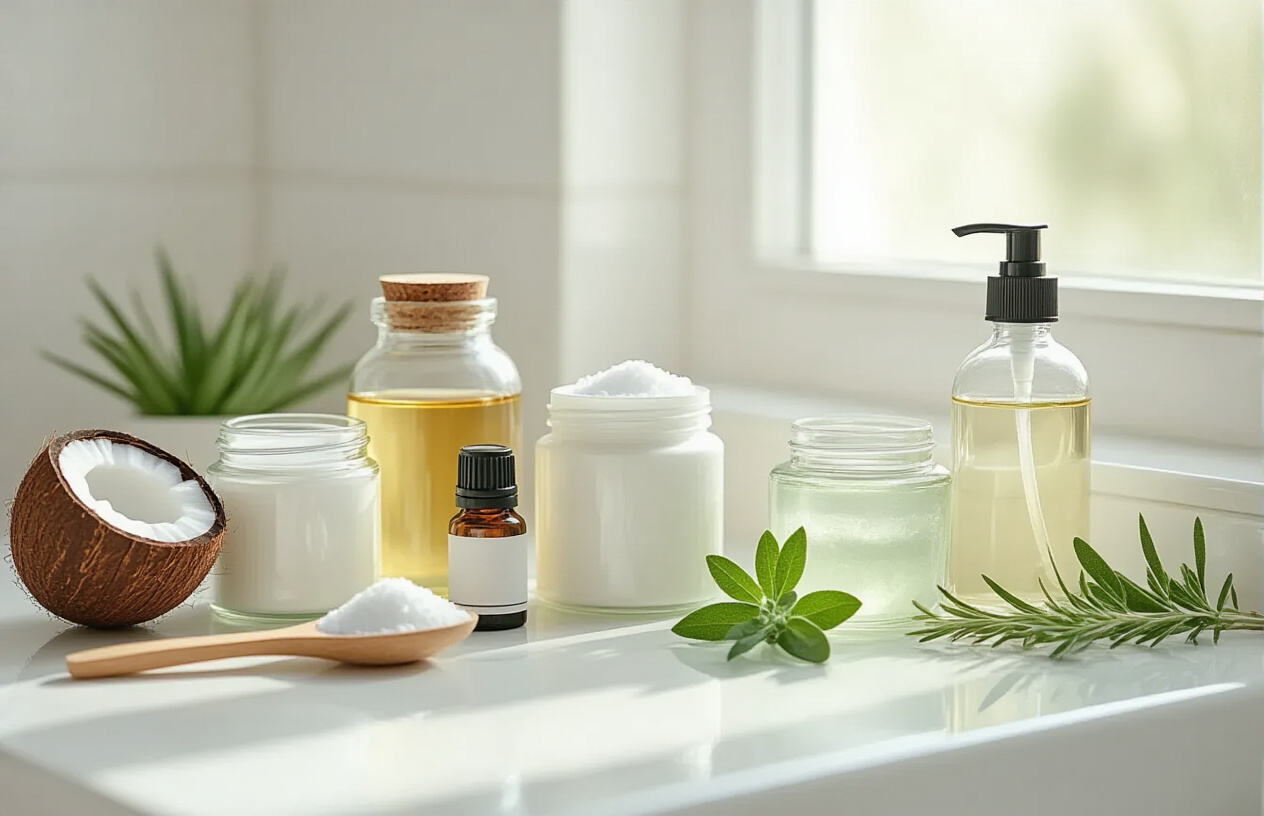
Apply baking soda paste to neutralize odor and absorb moisture
Baking soda works as a powerful natural antiperspirant because it absorbs excess moisture and neutralizes the bacteria that cause underarm odor. The alkaline nature of sodium bicarbonate creates an environment where odor-causing bacteria struggle to survive, making it an effective alternative to commercial deodorants filled with aluminum and harsh chemicals.
To create an effective baking soda paste, mix three tablespoons of baking soda with enough water to form a thick, spreadable consistency. The paste should be smooth but not runny. Apply this mixture directly to clean, dry underarms and let it sit for 15-20 minutes before rinsing off with lukewarm water. For sensitive skin, start with just 10 minutes of application time.
You can enhance the paste’s effectiveness by adding a few drops of tea tree oil or lavender essential oil, which provide additional antibacterial properties. Some people find that mixing equal parts baking soda and cornstarch creates an even more absorbent formula. Apply this treatment 2-3 times per week for best results, and always patch test on a small skin area first to check for sensitivity reactions.
Create witch hazel toner to tighten pores and reduce sweating
Witch hazel acts as a natural astringent that tightens skin pores and reduces the amount of sweat your underarms produce. This plant-based remedy contains tannins that help constrict blood vessels and minimize perspiration while providing gentle antimicrobial benefits that keep odor at bay.
To make your own witch hazel toner, combine equal parts witch hazel extract and distilled water in a clean spray bottle. Add 5-10 drops of your favorite essential oil like peppermint, eucalyptus, or lemon for a refreshing scent and extra cooling properties. Shake well before each use.
Apply the toner to freshly washed underarms using a cotton pad or by spraying directly onto the skin. Allow it to air dry completely before putting on clothes. This treatment works best when used twice daily – once in the morning and once before bed. The astringent properties become more effective with consistent use, so stick with the routine for at least two weeks to see noticeable improvements in sweat reduction.
Use cornstarch powder to keep underarms dry throughout the day
Cornstarch serves as an excellent natural powder that absorbs moisture and keeps underarms feeling dry and comfortable. Unlike talc-based powders that may contain harmful chemicals, cornstarch is completely natural and safe for daily use. It creates a barrier between your skin and clothing that prevents chafing while absorbing excess wetness.
Apply cornstarch powder to completely dry underarms after showering or before getting dressed. Use a powder puff or your clean hands to pat a light, even layer across the entire underarm area. Don’t over-apply – a thin dusting provides better coverage than thick clumps that can leave white residue on dark clothing.
For enhanced effectiveness, mix cornstarch with arrowroot powder in equal parts, or add a small amount of baking soda to boost odor-fighting properties. Store your custom powder blend in an airtight container and apply as needed throughout the day for touch-ups. This method works particularly well for people who experience moderate sweating and want a simple, chemical-free solution that won’t irritate sensitive skin.
Adjust Your Diet to Reduce Excessive Sweating

Eliminate spicy foods that trigger heat and perspiration
Spicy foods are notorious sweat triggers that can send your underarm perspiration into overdrive. When you bite into that fiery curry or slather hot sauce on your tacos, your body thinks it’s overheating and kicks your cooling system into high gear. Capsaicin, the compound that makes peppers hot, tricks your nervous system into believing your internal temperature has spiked.
Your sweat glands respond by producing extra moisture to cool you down, and this effect can last for hours after your meal. Foods like jalapeños, cayenne pepper, hot sauce, wasabi, and spicy ethnic dishes all fall into this category. Even seemingly mild foods with hidden heat – like certain marinades, seasonings, or prepared sauces – can catch you off guard.
The good news? You don’t need to eliminate all flavor from your meals. Try switching to herbs and mild spices like basil, oregano, thyme, or garlic powder. These alternatives add plenty of taste without triggering excessive sweating.
Reduce caffeine intake to lower stimulation of sweat glands
Your morning coffee habit might be contributing to your sweating problem more than you realize. Caffeine acts as a stimulant that increases your heart rate, raises your body temperature, and activates your sympathetic nervous system – the same system responsible for your fight-or-flight response and sweat production.
When caffeine enters your bloodstream, it can make your sweat glands more sensitive and trigger them to produce moisture even when you’re not physically hot. This effect is particularly noticeable in people who are already prone to excessive sweating.
Coffee isn’t the only culprit here. Energy drinks, sodas, chocolate, tea, and even some medications contain significant amounts of caffeine. Start by tracking how much caffeine you consume daily – you might be surprised by the total amount.
Consider gradually reducing your intake rather than going cold turkey to avoid withdrawal headaches. Replace your afternoon coffee with herbal tea, switch to decaf versions, or try green tea, which contains less caffeine than coffee while still providing a gentle energy boost.
Increase water consumption to regulate body temperature
Proper hydration plays a crucial role in managing your body’s temperature regulation system. When you’re well-hydrated, your body can efficiently distribute heat and maintain a stable internal temperature without relying heavily on excessive sweating.
Dehydration forces your body to work harder to cool itself down, often resulting in more concentrated, noticeable sweat. Water helps dilute the minerals and toxins in your sweat, making it less odorous and sticky. Aim for at least 8-10 glasses of water daily, but increase this amount if you’re physically active, live in a hot climate, or tend to sweat heavily.
Room temperature water works best for regular hydration, while cold water can provide temporary cooling relief during particularly sweaty moments. Add slices of cucumber, lemon, or mint to make plain water more appealing and encourage consistent intake throughout the day.
Add sage tea to your daily routine for natural sweat control
Sage has been used for centuries as a natural remedy for excessive sweating, and modern research supports its effectiveness. This herb contains compounds called tannins that have astringent properties, helping to reduce sweat production from the inside out.
Drinking sage tea regularly can help regulate your body’s sweating response over time. The herb works by affecting the nerve signals that control your sweat glands, essentially turning down their sensitivity to triggers that normally cause perspiration.
To make sage tea, steep one teaspoon of dried sage leaves in hot water for 10 minutes, then strain and drink. Start with one cup daily and gradually increase to two or three cups if needed. You can drink it hot or cold, and adding a touch of honey makes it more palatable.
Some people notice results within a few days, while others may need several weeks of consistent use to see significant changes. Fresh sage leaves work too – just use about twice the amount compared to dried herbs.
Wear Breathable Fabrics and Proper Clothing
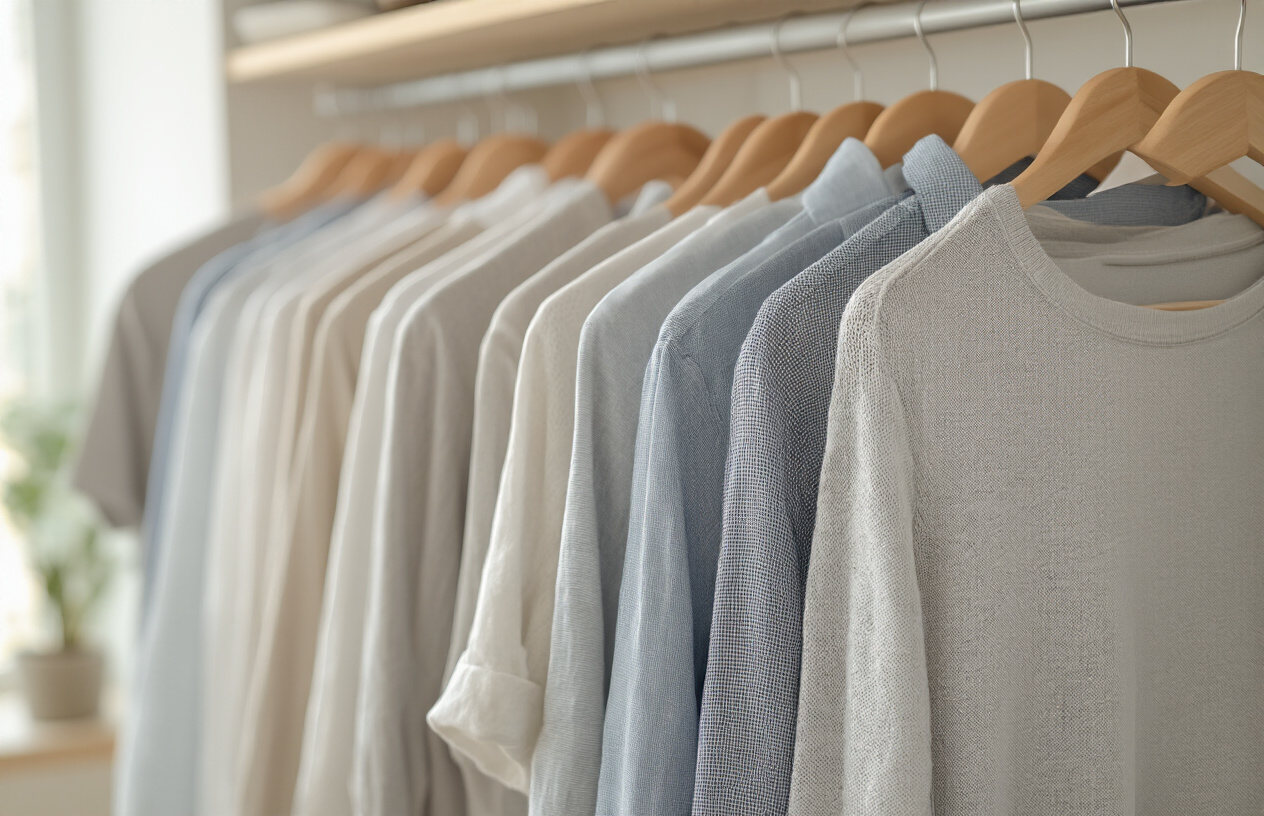
Choose cotton and linen materials for better air circulation
Your fabric choices play a huge role in how much you sweat. Cotton and linen are your best friends when it comes to staying dry and comfortable. These natural fibers have a special superpower – they’re incredibly breathable and allow air to flow freely around your skin.
Cotton works like a sponge, absorbing moisture from your body and then releasing it into the air through evaporation. This natural wicking process keeps your underarms feeling fresher longer. Linen takes this a step further with its loose weave that creates tiny air pockets, promoting even better ventilation.
Synthetic materials like polyester and nylon trap heat and moisture against your skin, creating the perfect storm for excessive sweating. They might dry quickly, but they don’t allow your skin to breathe properly. Bamboo fabric is another excellent alternative that’s naturally antimicrobial and incredibly soft against sensitive underarm skin.
Opt for loose-fitting garments to prevent trapped heat
Tight clothing is basically a recipe for sweat disaster. When your clothes hug your body too closely, they create a sealed environment where heat and moisture get trapped. This turns your underarms into a mini sauna, triggering your sweat glands to work overtime.
Loose-fitting clothes create space for air to circulate around your body, naturally cooling you down. Think flowy blouses, relaxed t-shirts, and dresses with room to breathe. The extra space allows sweat to evaporate more efficiently rather than being absorbed into tight fabric pressed against your skin.
This doesn’t mean you need to wear oversized clothes everywhere. Just choose garments that skim your body rather than cling to it. A good test is the pinch test – you should be able to pinch some fabric away from your skin without stretching it.
Select light-colored clothing to reflect heat away from body
Color science isn’t just for artists – it’s crucial for sweat management too. Dark colors absorb heat from sunlight and artificial lighting, making your body work harder to stay cool. Black, navy, and deep browns are the worst offenders, acting like heat magnets that can raise your body temperature by several degrees.
Light colors like white, cream, pastels, and light gray reflect heat away from your body instead of absorbing it. White is the champion here, reflecting nearly all light and heat that hits it. This simple switch can make a noticeable difference in how much you sweat, especially during warmer months or in heated indoor spaces.
The difference is most dramatic outdoors, but even under office fluorescent lights, lighter colors help maintain a cooler body temperature. Pair this with breathable fabrics and proper fit, and you’ve got a winning combination for natural sweat control.
Practice Stress Management Techniques
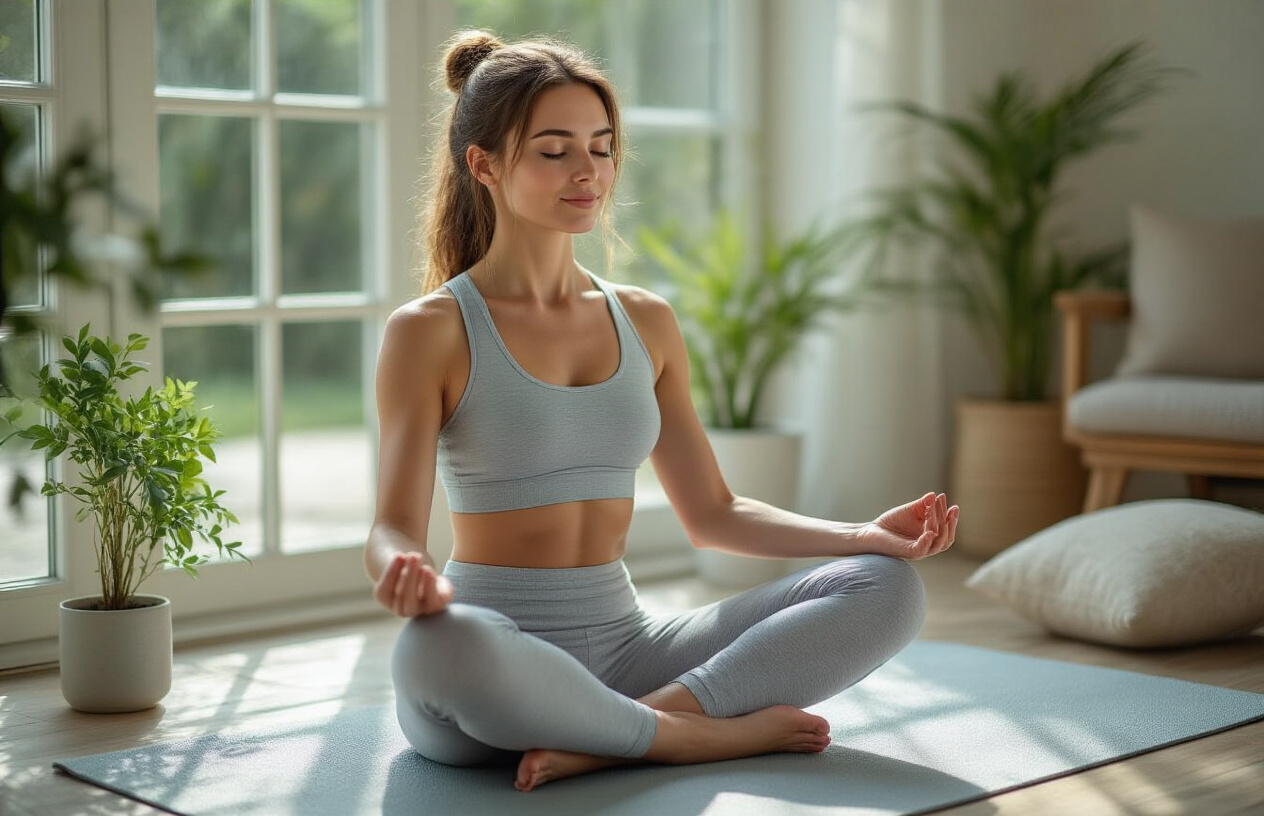
Learn Deep Breathing Exercises to Control Anxiety-Induced Sweating
When stress kicks in, your body activates its fight-or-flight response, triggering excessive sweating even when you’re not physically active. Deep breathing exercises work by switching your nervous system from panic mode to calm mode, directly reducing stress-induced underarm sweating.
Start with the 4-7-8 technique: breathe in through your nose for 4 counts, hold for 7 counts, then exhale through your mouth for 8 counts. Practice this for 5-10 minutes daily, and use it whenever you feel anxiety building up. The extended exhale activates your parasympathetic nervous system, which naturally reduces sweat production.
Box breathing offers another powerful option. Inhale for 4 counts, hold for 4, exhale for 4, and hold empty for 4 counts. This technique helps before job interviews, presentations, or any stressful situation where you want to prevent sweating before it starts.
Try Meditation to Reduce Overall Stress Levels
Regular meditation creates lasting changes in how your body responds to stress, breaking the cycle of chronic anxiety that leads to persistent sweating. Even 10 minutes of daily meditation can lower cortisol levels and reduce your baseline stress response.
Mindfulness meditation works particularly well for sweating issues. Sit comfortably, focus on your breath, and when you notice sweating or anxiety thoughts, acknowledge them without judgment and return attention to breathing. This practice teaches your mind to stay calm instead of spiraling into stress responses that trigger sweating.
Body scan meditation helps you recognize early signs of tension before they escalate into full sweating episodes. Start from your toes and mentally check each body part, releasing tension as you go. Apps like Headspace or Calm can guide beginners through these techniques.
Use Progressive Muscle Relaxation Before Important Events
Progressive muscle relaxation (PMR) prevents anticipatory sweating by releasing physical tension that builds up before stressful events. This technique involves systematically tensing and then relaxing different muscle groups, teaching your body the difference between tension and relaxation.
Start with your feet: clench your toes tightly for 5 seconds, then release and notice the relaxation. Move up through your calves, thighs, buttocks, abdomen, hands, arms, shoulders, neck, and face. The entire process takes 15-20 minutes and works best when practiced regularly.
Use PMR 30 minutes before important meetings, social events, or presentations. The physical relaxation signals your nervous system to calm down, preventing the stress response that leads to excessive sweating. Many people find this technique especially helpful for managing night sweats caused by anxiety about the next day’s events.
Establish Regular Sleep Patterns to Balance Hormones
Poor sleep disrupts your body’s hormone balance, particularly cortisol and adrenaline, which directly influence sweat production. When you’re sleep-deprived, your stress hormones stay elevated, making you more prone to anxiety sweating throughout the day.
Aim for 7-9 hours of consistent sleep by going to bed and waking up at the same time daily, even on weekends. Create a cool, dark sleeping environment since overheating during sleep can worsen overall sweating patterns. Keep your bedroom between 65-68°F and use breathable bedding materials.
Develop a wind-down routine that begins 1-2 hours before bedtime. Avoid screens, caffeine, and intense exercise during this time. Instead, try gentle stretching, reading, or herbal tea. Quality sleep helps reset your stress response system, making you naturally less reactive to daily stressors that trigger underarm sweating.
Apply Cold Therapy Methods

Use Ice Cubes on Pulse Points to Lower Body Temperature
Your body’s pulse points are secret weapons in the fight against underarm sweat. These areas, including your wrists, temples, and back of your neck, sit close to major blood vessels that carry warm blood throughout your body. When you apply ice cubes to these spots, you’re basically giving your entire circulatory system a cool-down signal.
The science behind this method is surprisingly simple. Cold temperatures at pulse points help reduce your core body temperature, which signals your sweat glands to dial down their activity. Focus on your wrists first – hold an ice cube wrapped in a thin cloth against each wrist for about 30 seconds. The cold will travel through your bloodstream, creating a cooling effect that reaches your underarms within minutes.
Your temples and the back of your neck work just as well. These pulse points are particularly effective because they’re close to your brain’s temperature regulation center. When you cool these areas, your body interprets this as a sign that the overall temperature is dropping, naturally reducing sweat production across all areas, including your underarms.
For best results, use this technique 10-15 minutes before situations where you typically sweat more, like important meetings or social events.
Take Cool Showers to Reset Your Body’s Thermostat
Cool showers work like a master reset button for your body’s internal temperature control system. When you expose your entire body to cooler water, you’re training your nervous system to operate at a lower baseline temperature. This doesn’t mean you need to endure freezing cold water – a comfortable cool temperature that makes you feel refreshed is perfect.
Start your shower with warm water to open your pores and cleanse thoroughly, then gradually reduce the temperature over the final two minutes. This gradual transition prevents shock to your system while still providing the cooling benefits. The cool water causes your blood vessels to constrict slightly, which helps maintain a lower body temperature even after you’ve dried off.
Regular cool showers also improve your body’s heat tolerance over time. People who take cool showers consistently often find they sweat less in general because their bodies become more efficient at temperature regulation. The effect can last several hours after your shower, making this technique particularly valuable for your morning routine.
Timing matters with cool showers. Taking one in the morning sets you up for a cooler day, while an evening cool shower can help prevent night sweats that might carry over into the next day’s sweat levels.
Apply Cold Compress to Underarms Before Going Out
Cold compresses offer targeted relief right where you need it most. This direct approach works by temporarily numbing the sweat glands in your underarm area, reducing their immediate activity. Unlike other cooling methods that work systemically, cold compresses give you precise control over the area that concerns you most.
Create an effective cold compress using a clean washcloth soaked in cold water, or wrap ice cubes in a thin towel. Never apply ice directly to your skin, as this can cause irritation or even frostbite. Press the compress gently against each underarm for 2-3 minutes, allowing the cold to penetrate the skin and reach the sweat glands beneath.
The timing of cold compress application makes a significant difference in its effectiveness. Apply the compress about 5-10 minutes before you need to leave the house or before putting on your clothes. This gives your underarms time to cool down without the immediate shock of fabric contact that might trigger defensive sweating.
You can enhance this method by keeping several damp washcloths in your refrigerator, ready for quick use. Some people find that adding a few drops of peppermint oil to the water creates an additional cooling sensation that lasts longer than plain water compresses.
Maintain Proper Hygiene Habits

Shower Daily with Antibacterial Soap to Prevent Odor Buildup
Your daily shower routine plays a crucial role in controlling underarm sweat and odor. Bacteria thrive in warm, moist environments, making your underarms a perfect breeding ground. When bacteria break down the proteins and fats in your sweat, they produce the unpleasant smell we associate with body odor.
Choose an antibacterial soap that contains ingredients like triclosan, benzalkonium chloride, or tea tree oil. These ingredients actively fight the bacteria responsible for odor production. Focus on thoroughly washing your underarm area, spending at least 30 seconds scrubbing gently with your hands or a washcloth.
Don’t rush this step – proper cleansing removes yesterday’s deodorant residue, dead skin cells, and accumulated bacteria. Pay attention to water temperature too. While hot water might feel relaxing, lukewarm water is better for your skin and won’t strip away natural oils that help protect against irritation.
Shave Underarm Hair to Reduce Bacteria Growth
Hair traps moisture and creates additional surface area for bacteria to collect and multiply. Removing underarm hair significantly reduces the space where bacteria can hide and flourish. This simple step can dramatically decrease both sweat retention and odor intensity.
If you’re new to shaving your underarms, use a sharp razor and shaving cream to prevent irritation. Shave in multiple directions – with the grain first, then against it for a closer shave. Replace your razor blades regularly, as dull blades can cause nicks and bumps that become entry points for bacteria.
For those who prefer not to shave completely, trimming hair short with scissors or clippers still provides benefits. Even reducing hair length by half can improve air circulation and make it easier for antiperspirants to reach your skin effectively.
Allow Underarms to Dry Completely Before Applying Products
Wet or damp skin prevents antiperspirants and deodorants from adhering properly and forming an effective barrier against sweat. When you apply products to moist skin, they can’t create the aluminum-based plugs that block sweat ducts, reducing their effectiveness significantly.
After showering, pat your underarms dry with a clean towel rather than rubbing vigorously. Air-drying for a few extra minutes ensures complete moisture removal. This waiting period might seem tedious, but it’s essential for maximum product performance.
Consider applying antiperspirant before bed when your sweat glands are less active. This gives the aluminum compounds time to form effective plugs in your sweat ducts overnight. You can still apply deodorant in the morning over the antiperspirant for additional freshness and fragrance.
Change Clothes Immediately After Sweating
Wet, sweaty clothes create the perfect environment for bacterial growth and can reintroduce odor-causing bacteria to freshly cleaned skin. The longer you stay in damp clothing, the more bacteria multiply and the stronger the odor becomes.
Keep spare shirts at work, in your car, or in your gym bag for unexpected sweating situations. Choose moisture-wicking undershirts that pull sweat away from your skin and allow it to evaporate quickly. These specialized fabrics help keep you drier longer and reduce the frequency of clothing changes needed.
Wash sweaty clothes as soon as possible, and don’t let them sit in your hamper for days. Bacteria continue growing on dirty laundry, and the smell can become permanently embedded in fabric fibers. Pre-treat heavily soiled areas with enzyme-based stain removers before washing.
Try Herbal Remedies and Essential Oils
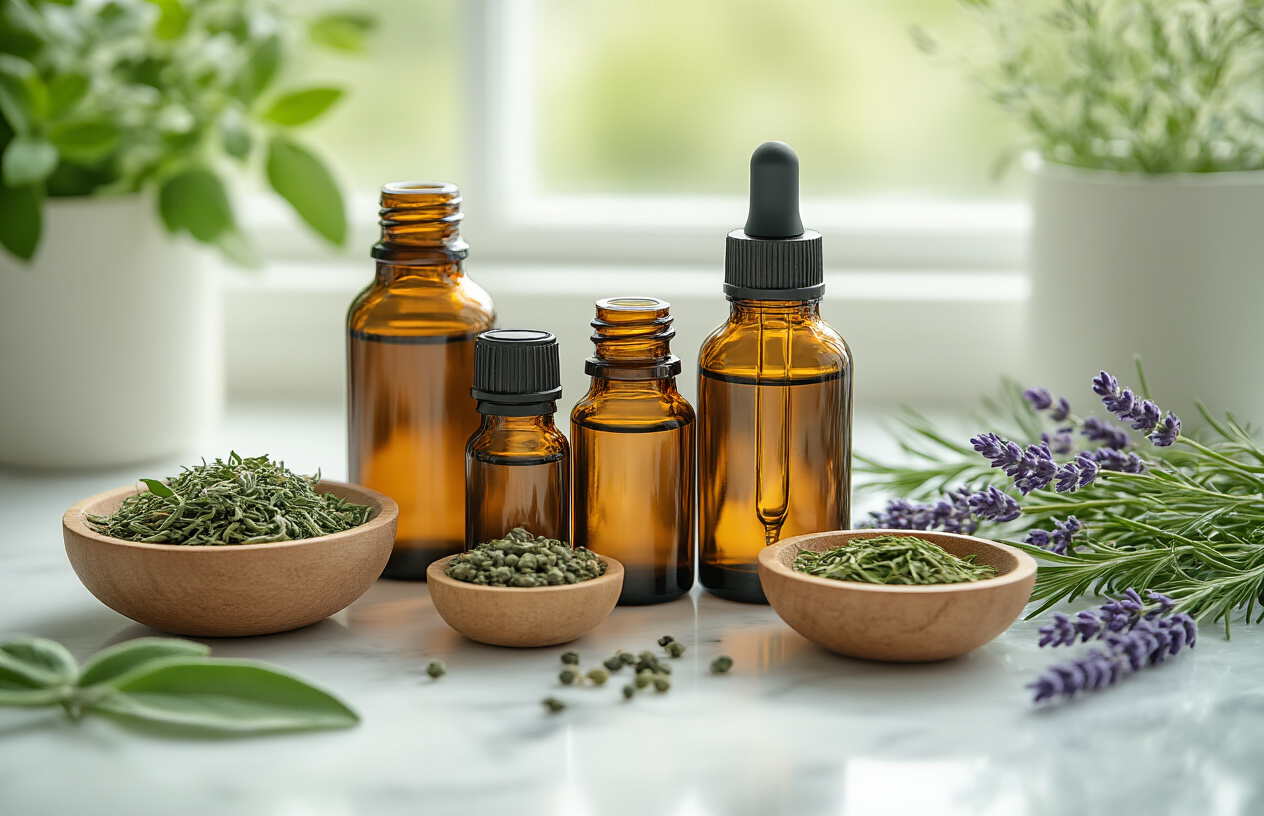
Apply diluted tea tree oil for antibacterial protection
Tea tree oil stands out as one of the most effective natural antimicrobial agents for underarm care. This powerful essential oil contains compounds called terpenes that actively fight the bacteria responsible for creating body odor. When you sweat, bacteria on your skin break down the moisture, producing the unpleasant smell we associate with perspiration.
Always dilute tea tree oil before applying it to your skin. Mix 2-3 drops with a tablespoon of carrier oil like coconut oil or jojoba oil. You can also add a few drops to your regular unscented lotion. Apply this mixture to clean, dry underarms once daily, preferably at night to allow the oil to work without interference from clothing or additional sweating.
Start with a patch test on a small area of skin to check for sensitivity. Some people experience irritation with tea tree oil, so gradual introduction works best. The antibacterial properties help reduce the bacterial population that causes odor, while the natural astringent qualities can help minimize pore size temporarily.
Use lemon juice as a natural astringent to tighten pores
Fresh lemon juice acts as a natural astringent and antiperspirant due to its high citric acid content. The acid helps tighten pores, potentially reducing the amount of sweat that reaches the skin surface. Lemon juice also creates an acidic environment that makes it difficult for odor-causing bacteria to thrive.
Apply fresh lemon juice directly to clean underarms using a cotton pad or cut lemon half. Let it dry completely before putting on clothes or deodorant. The best time for application is right before bed, allowing the citric acid to work overnight without causing photosensitivity issues.
| Application Method | Benefits | Precautions |
|---|---|---|
| Fresh lemon halves | Maximum acid concentration | May cause stinging on sensitive skin |
| Cotton pad with juice | Controlled application | Test on small area first |
| Mixed with water | Gentler for sensitive skin | Reduced effectiveness |
Avoid sun exposure immediately after application, as citric acid can increase photosensitivity. Rinse off in the morning and apply sunscreen if you’ll be outdoors.
Create rosemary oil blend to regulate sweat production
Rosemary oil contains natural compounds that help regulate your body’s sweat response while providing antibacterial benefits. The herb has been traditionally used to improve circulation and reduce excessive perspiration. Creating your own rosemary oil blend gives you control over the concentration and additional beneficial ingredients.
Combine 5 drops of rosemary essential oil with 2 tablespoons of witch hazel and 1 tablespoon of aloe vera gel. This creates a cooling, astringent blend that applies easily and absorbs quickly. The witch hazel provides additional pore-tightening benefits, while aloe vera soothes and moisturizes the skin.
Store your blend in a small glass bottle and shake before each use. Apply twice daily to clean underarms, allowing it to dry completely before dressing. Many people notice reduced sweating within a week of consistent use.
You can enhance the blend by adding a few drops of lavender oil for additional antibacterial properties and a pleasant scent, or peppermint oil for extra cooling effects.

Managing excessive underarm sweating doesn’t have to mean reaching for harsh chemicals or expensive treatments. These seven natural approaches offer safe, accessible solutions you can start using today. From switching to breathable fabrics and natural deodorants to managing stress levels and trying cold therapy, each method targets different causes of excessive sweating while being gentle on your skin.
The beauty of these natural remedies lies in their simplicity and safety. You can combine multiple approaches – like adjusting your diet while practicing better hygiene habits, or using herbal remedies alongside stress management techniques. Start with one or two methods that feel most manageable for your lifestyle, then gradually add others as you see what works best for your body. Your underarms will thank you for choosing natural solutions that work with your body’s processes rather than against them.
